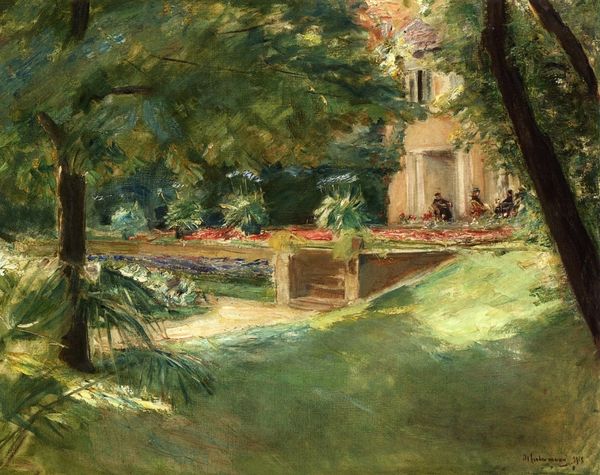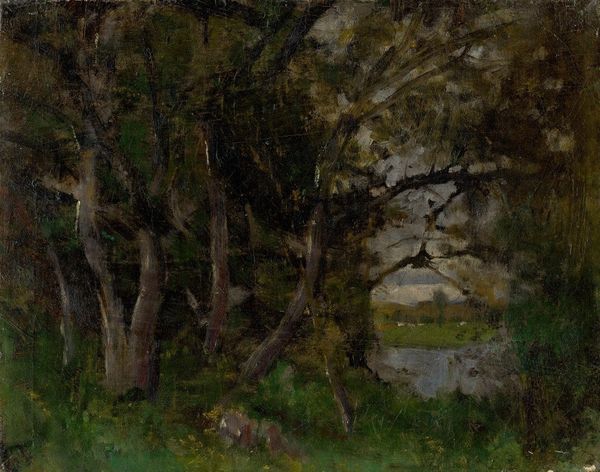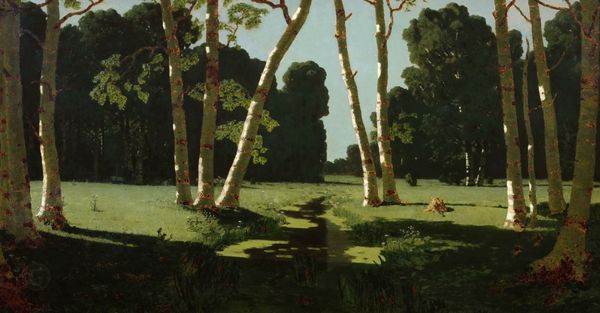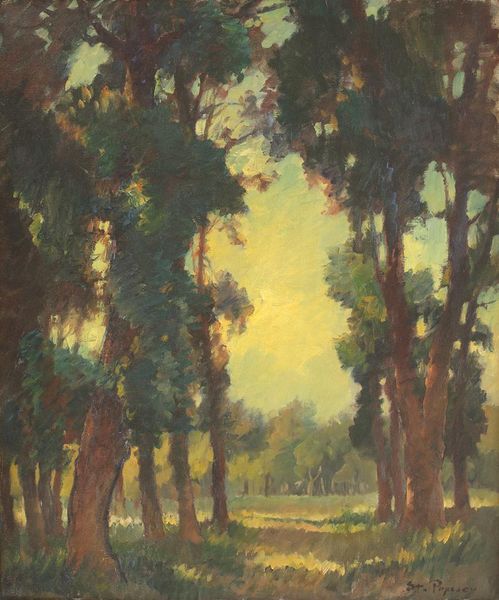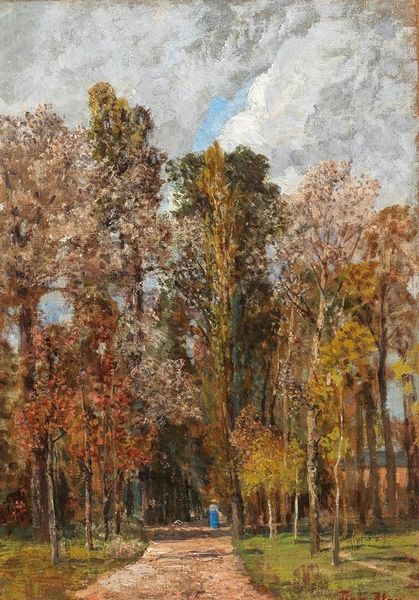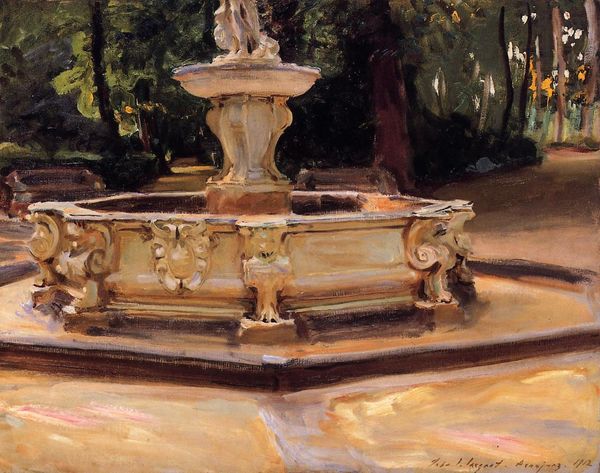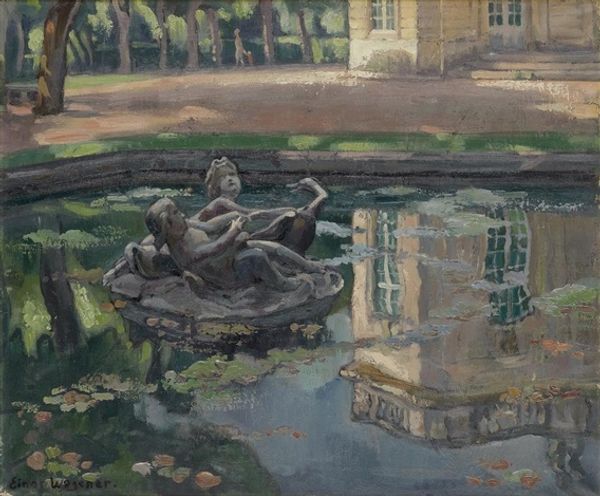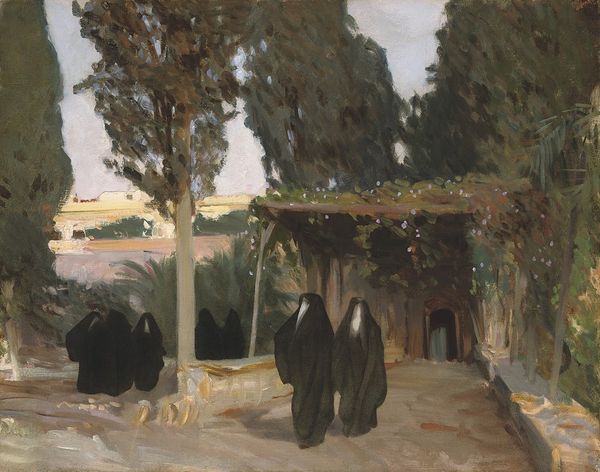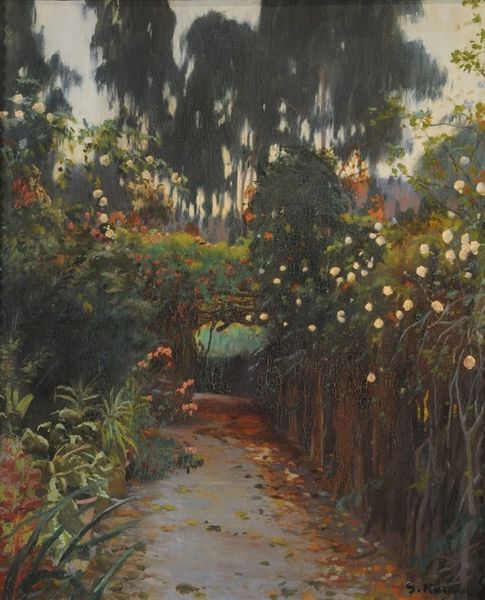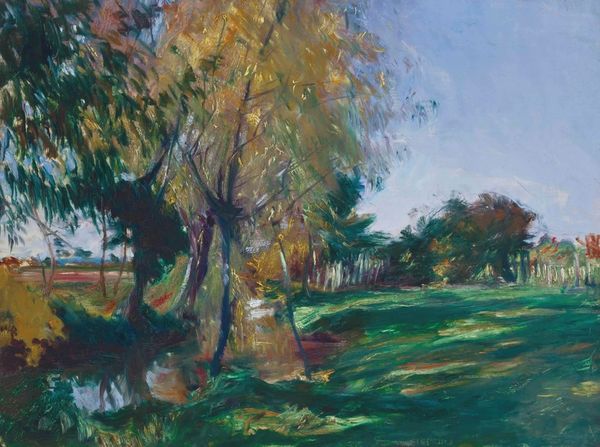
Copyright: Public Domain: Artvee
Curator: Santiago Rusiñol painted "Otoñal" in 1910. The oil on canvas work presents a view within a formal garden, typical of the Post-Impressionist style. Editor: It immediately evokes a melancholic and somewhat subdued mood. The color palette seems intentionally muted, and even the sunlight filtering through the trees has a gentle quality. Curator: Precisely. Rusiñol uses color to structure the painting—the cool greens of the sculpted shrubbery in the foreground contrast subtly with the warmer browns and oranges of the foliage. Consider the strategic placement of the fountain; its white marble anchors the composition and draws the eye deeper into the scene. Editor: I'm also thinking about the social implications of such manicured spaces. Formal gardens, historically, were displays of wealth and control, serving to emphasize the power dynamics of the aristocracy who commissioned them. How does Rusiñol negotiate this history, particularly during a time when social hierarchies were being heavily critiqued? Curator: The controlled structure and calculated use of linear perspective invites a sense of cultivated beauty. It presents a space refined through human intervention and intent. One might also appreciate how the tall, straight tree trunks create a screen-like visual, acting to compress the space depicted on the canvas and further controlling its perception. Editor: But is he critiquing it? Is Rusiñol presenting these gardens ironically or idealistically? The figures in the distance suggest perhaps privileged leisure, oblivious to the societal disparities outside those garden walls. Doesn't it feel almost claustrophobic and restrictive despite its apparent openness? Curator: Perhaps, and such readings are not unfounded. Ultimately, I am captivated by Rusiñol's formal rigor. How a study of lines, hues, and composition can achieve this nuanced dialogue with social and historical context is worth appreciating. Editor: Yes, his approach offers so much regarding our relationship with spaces defined by both aesthetic pursuit and ideological weight. "Otoñal" is more than just a scene; it reflects back our human tendency toward imposed structures of control, doesn’t it?
Comments
No comments
Be the first to comment and join the conversation on the ultimate creative platform.
